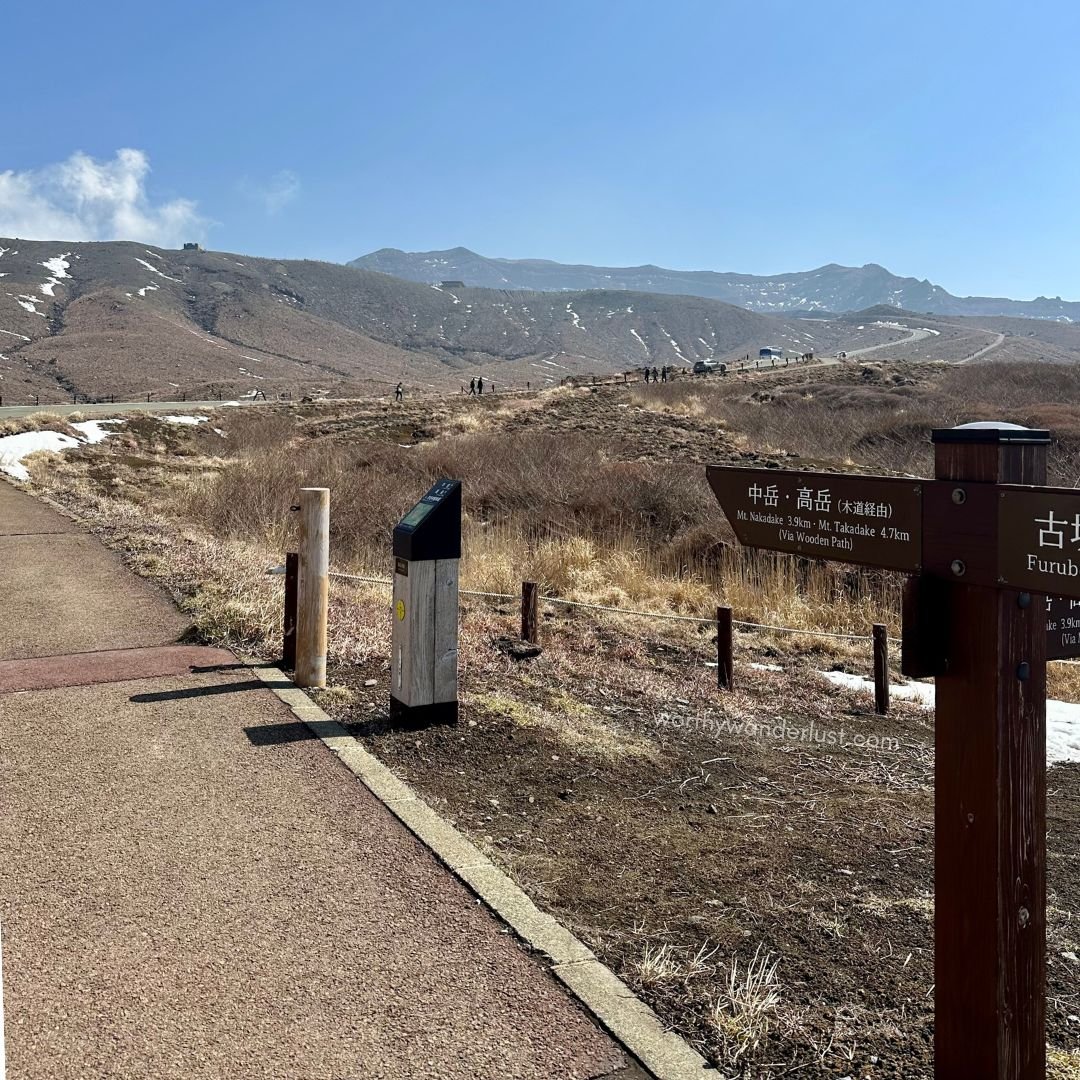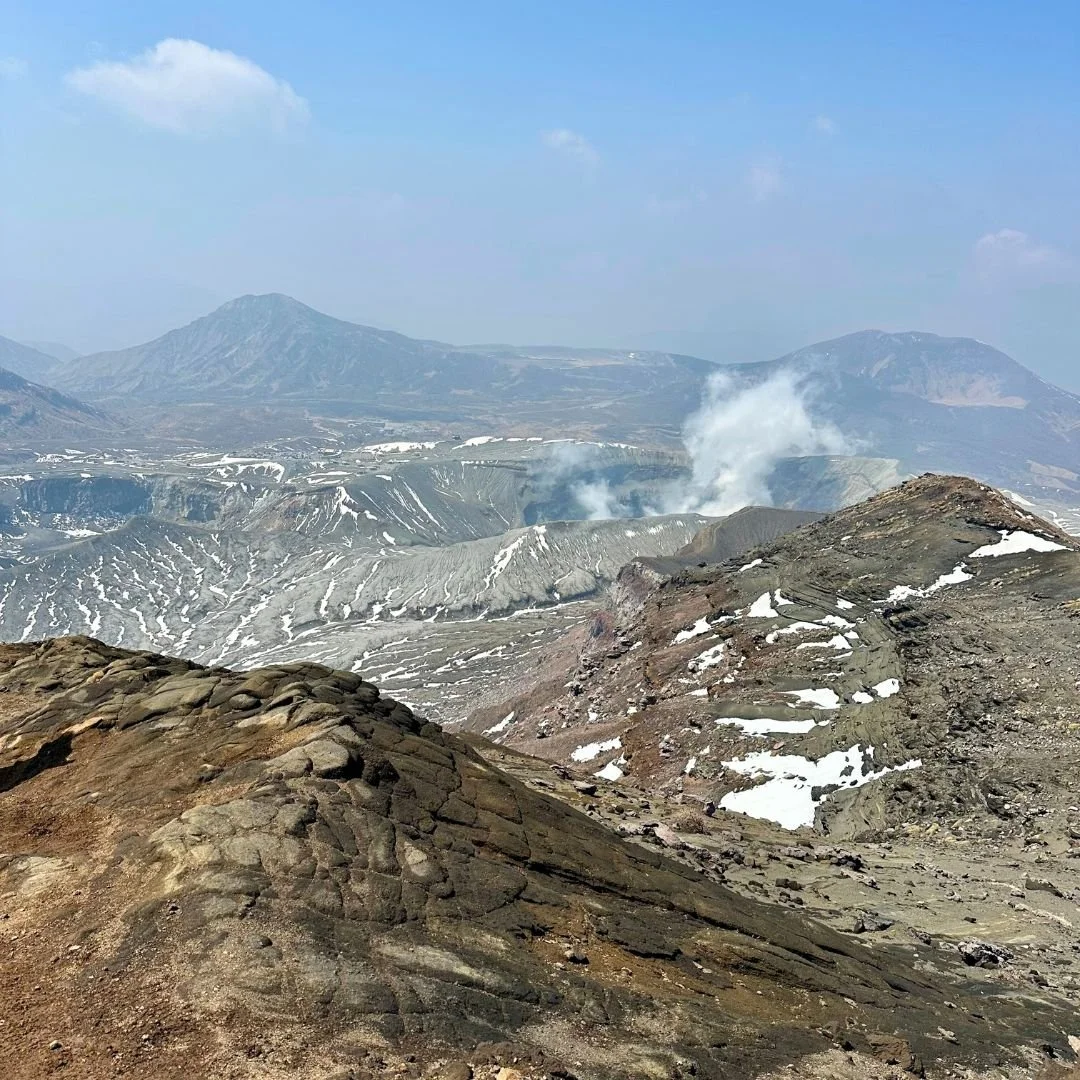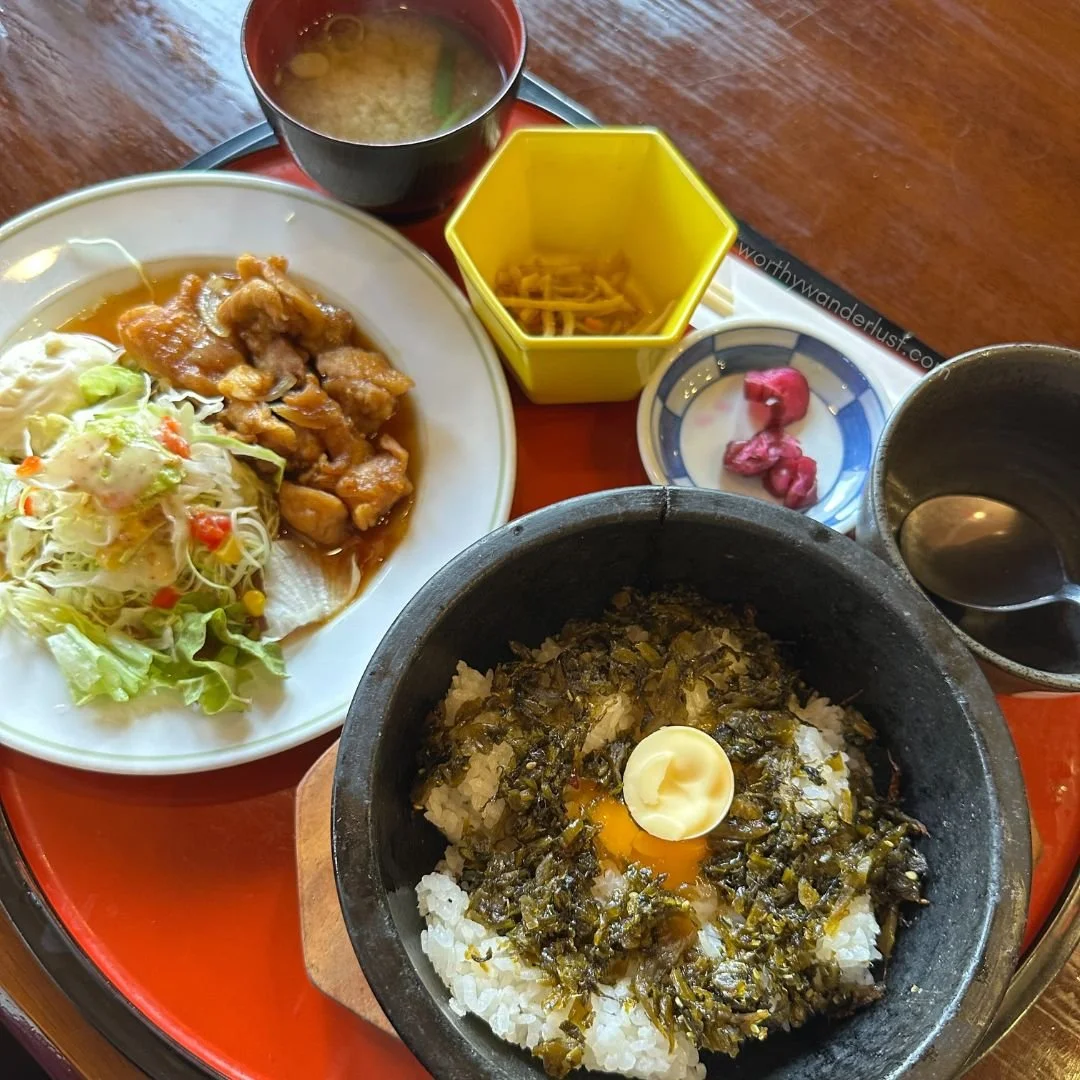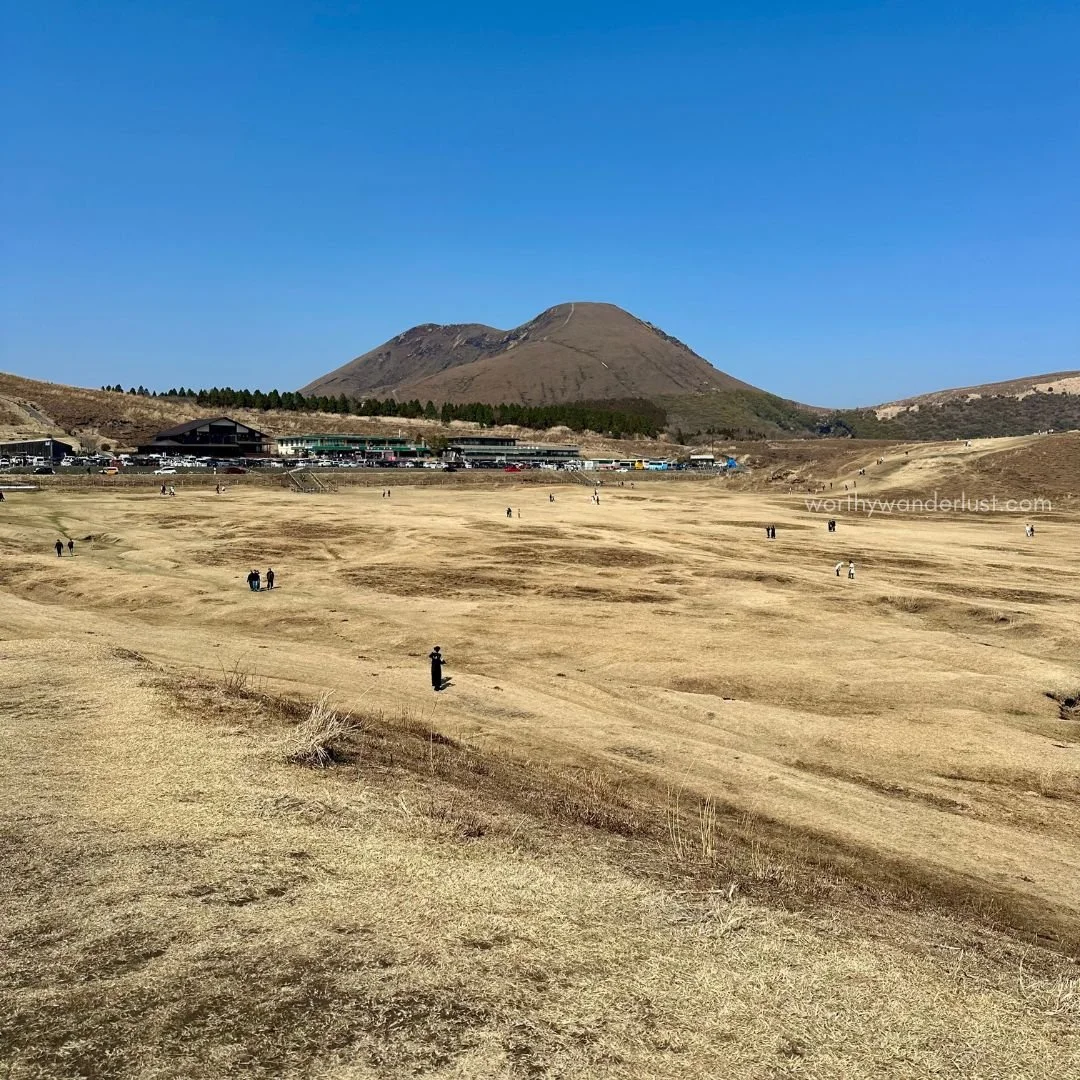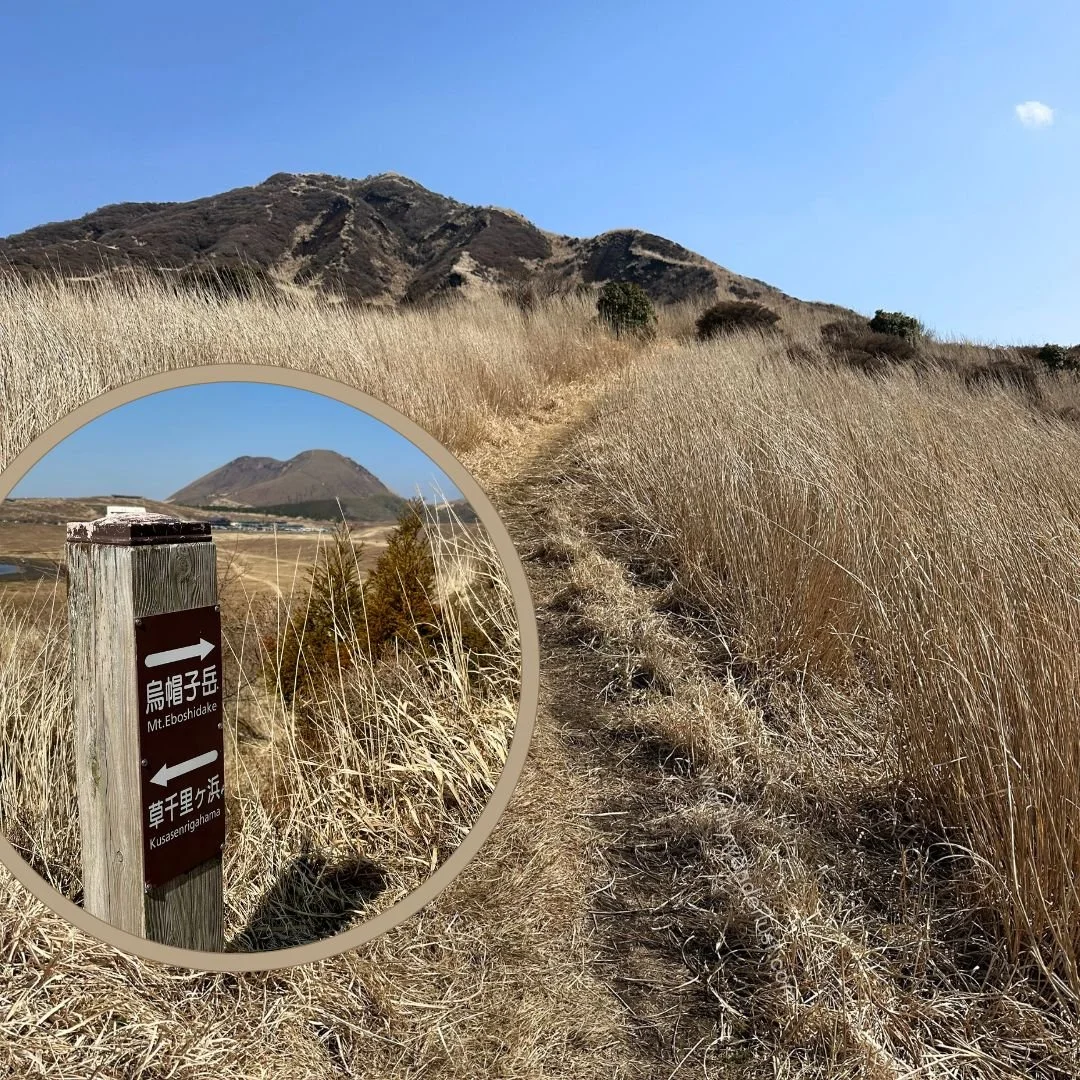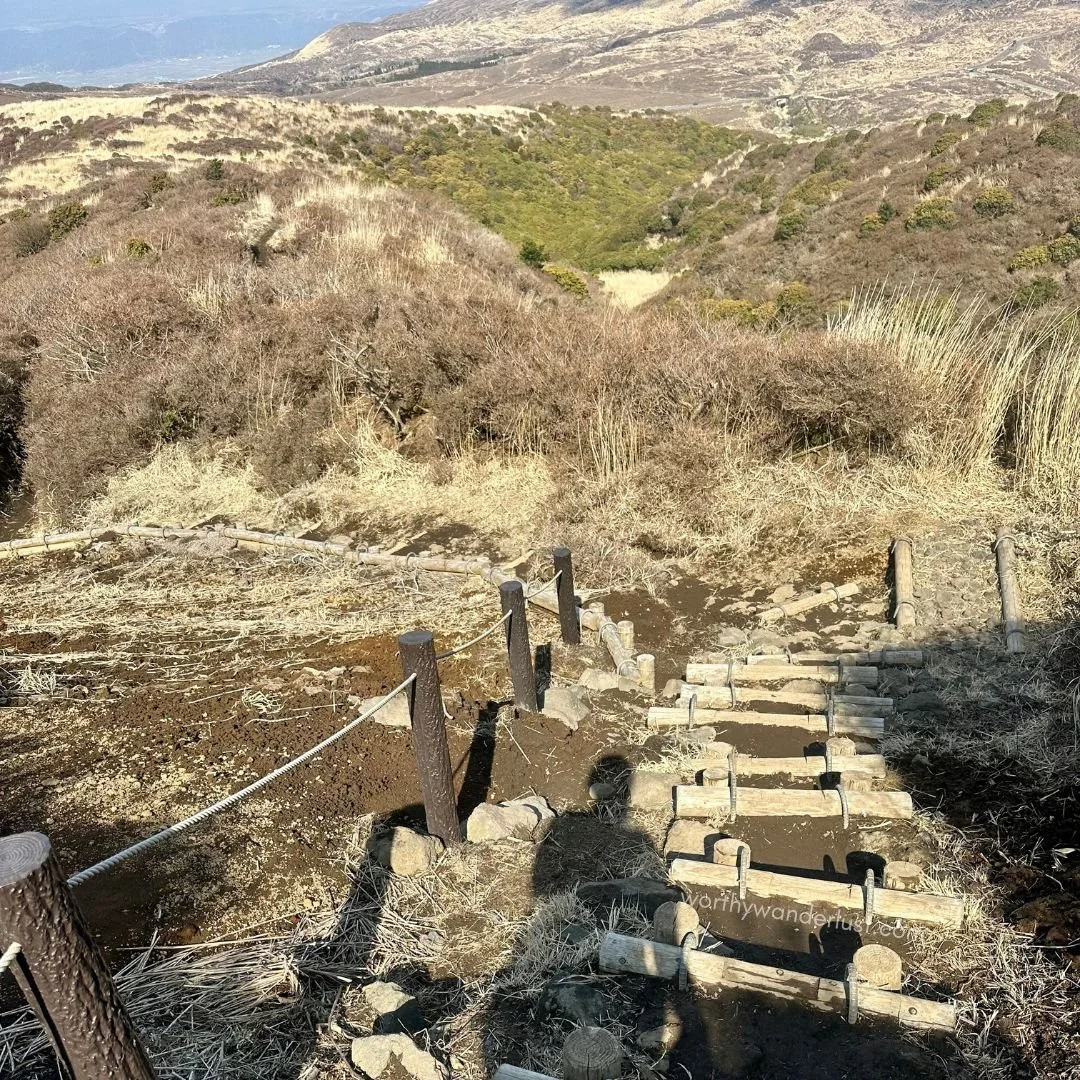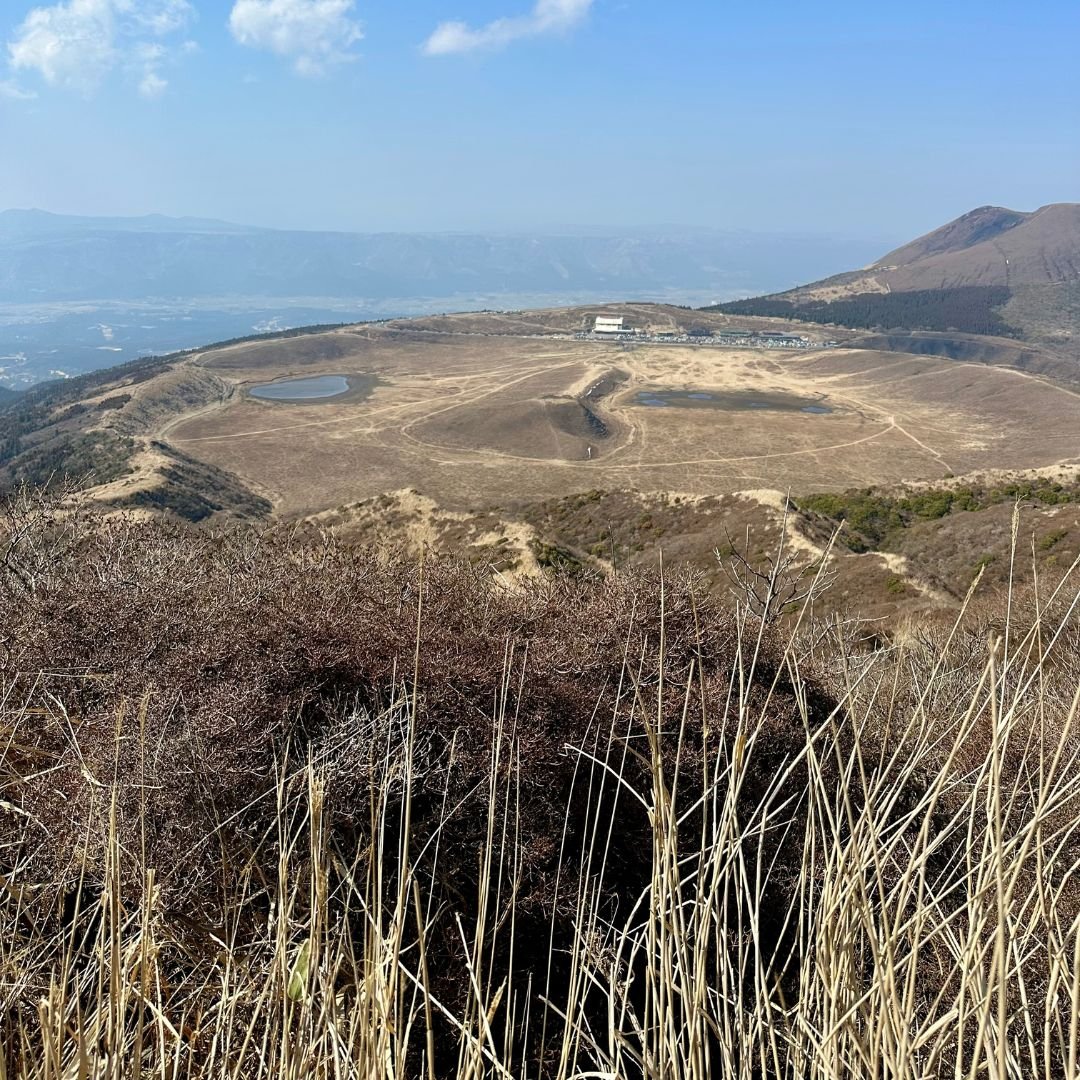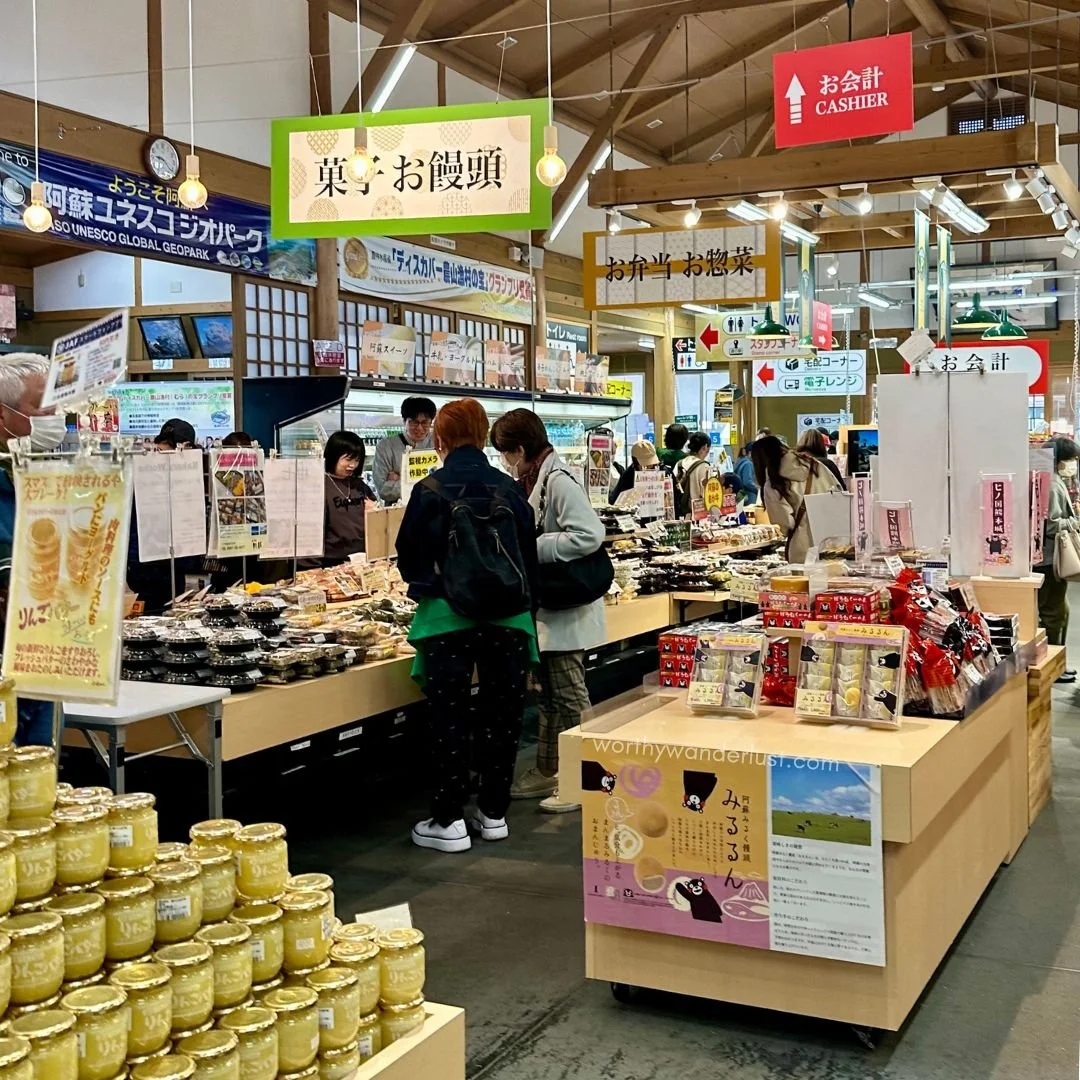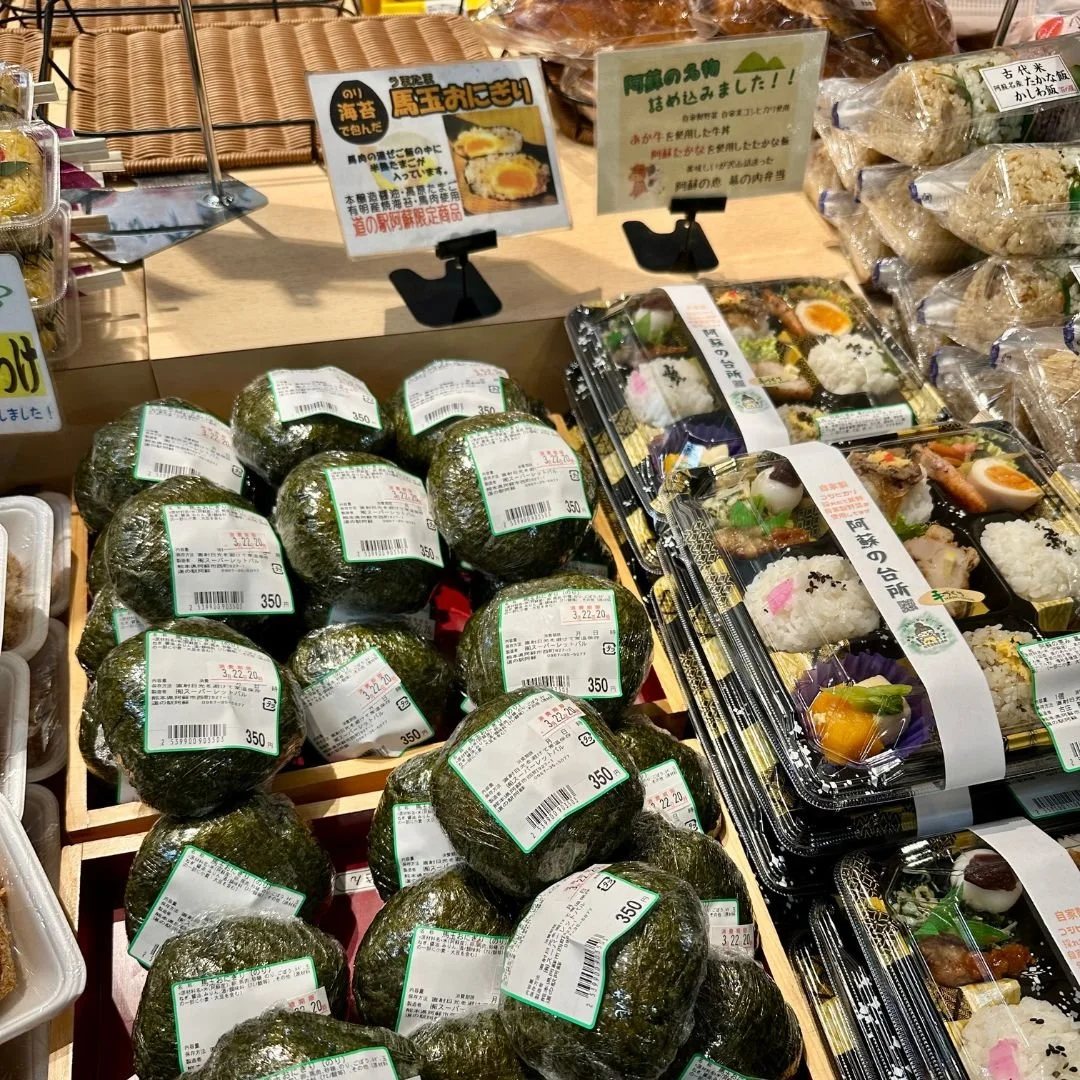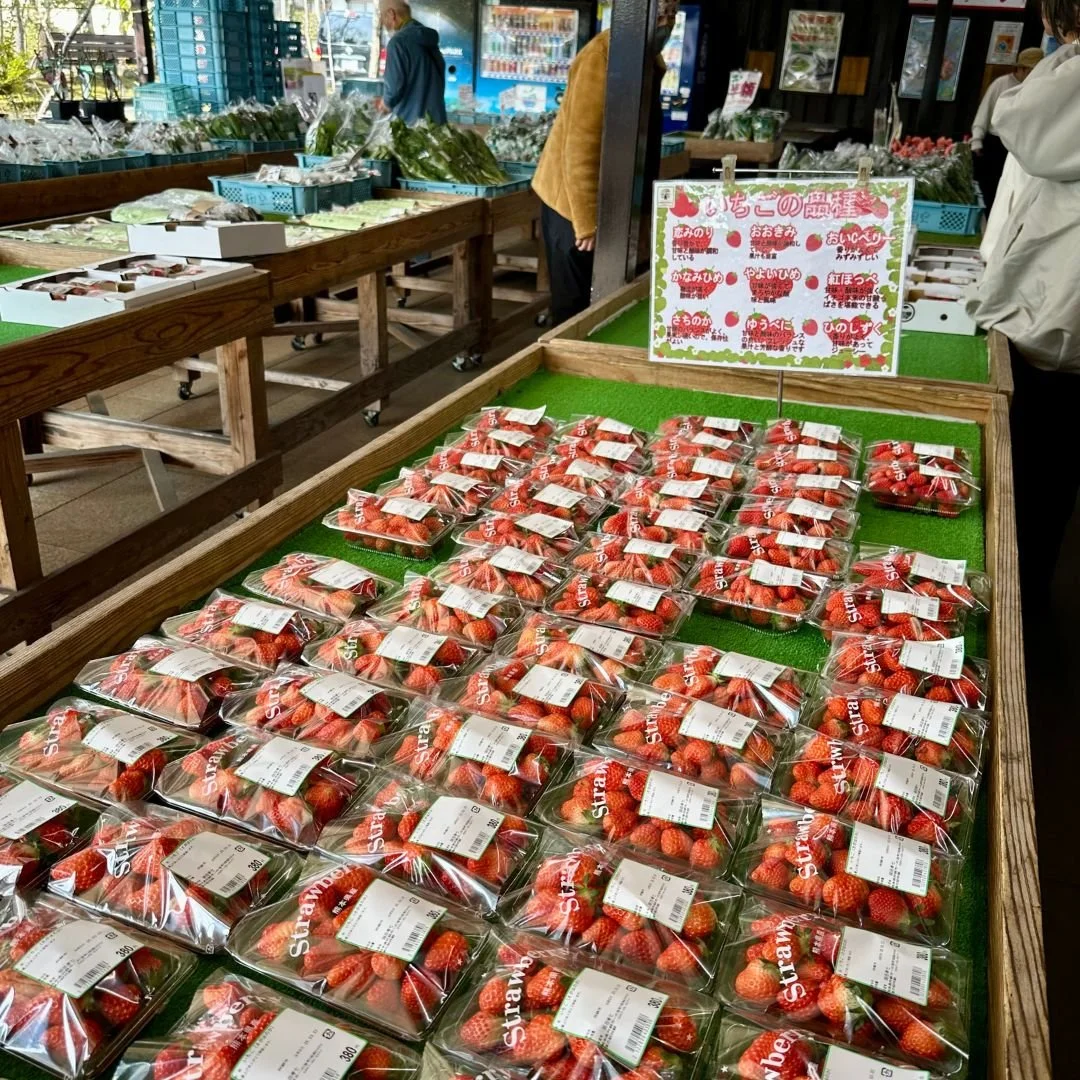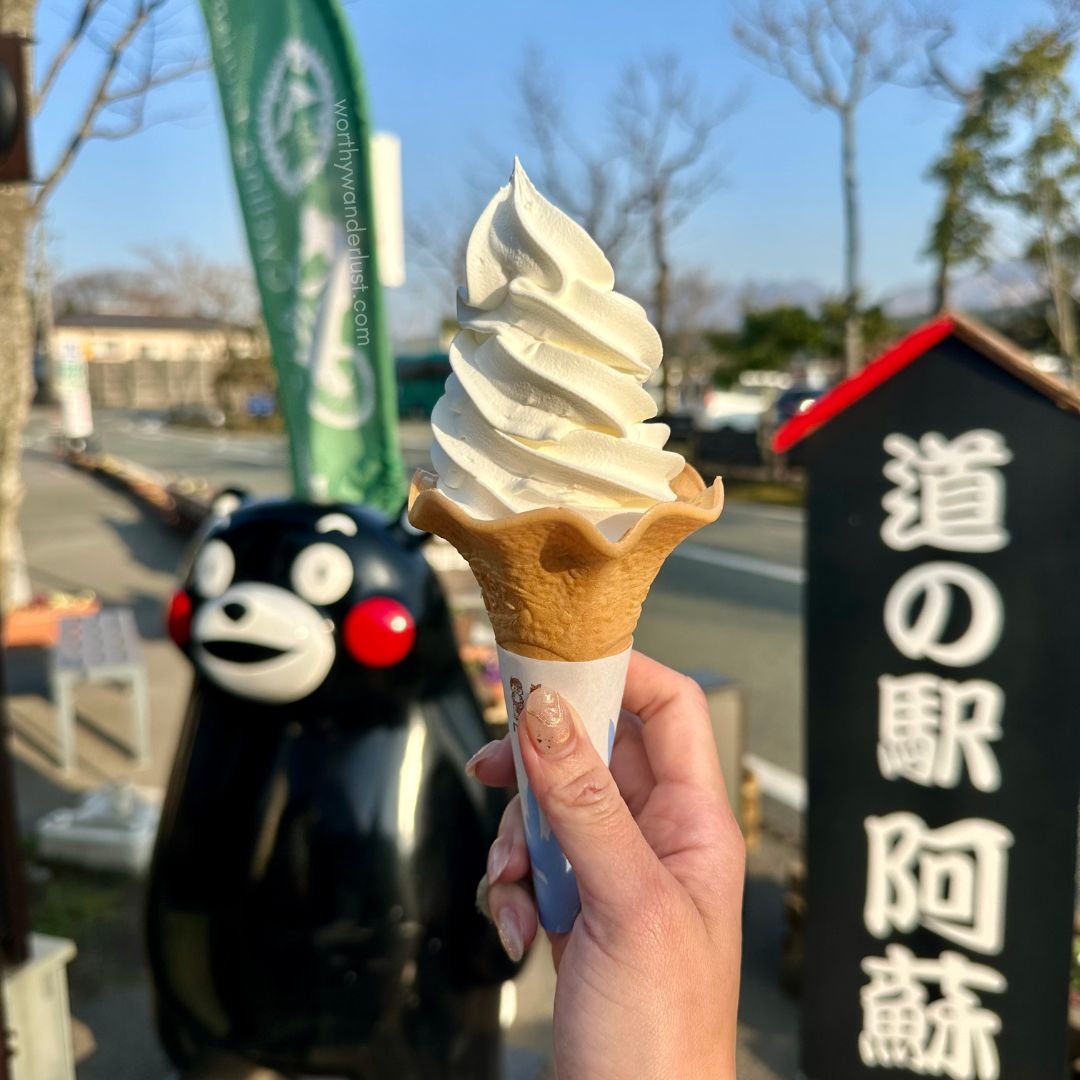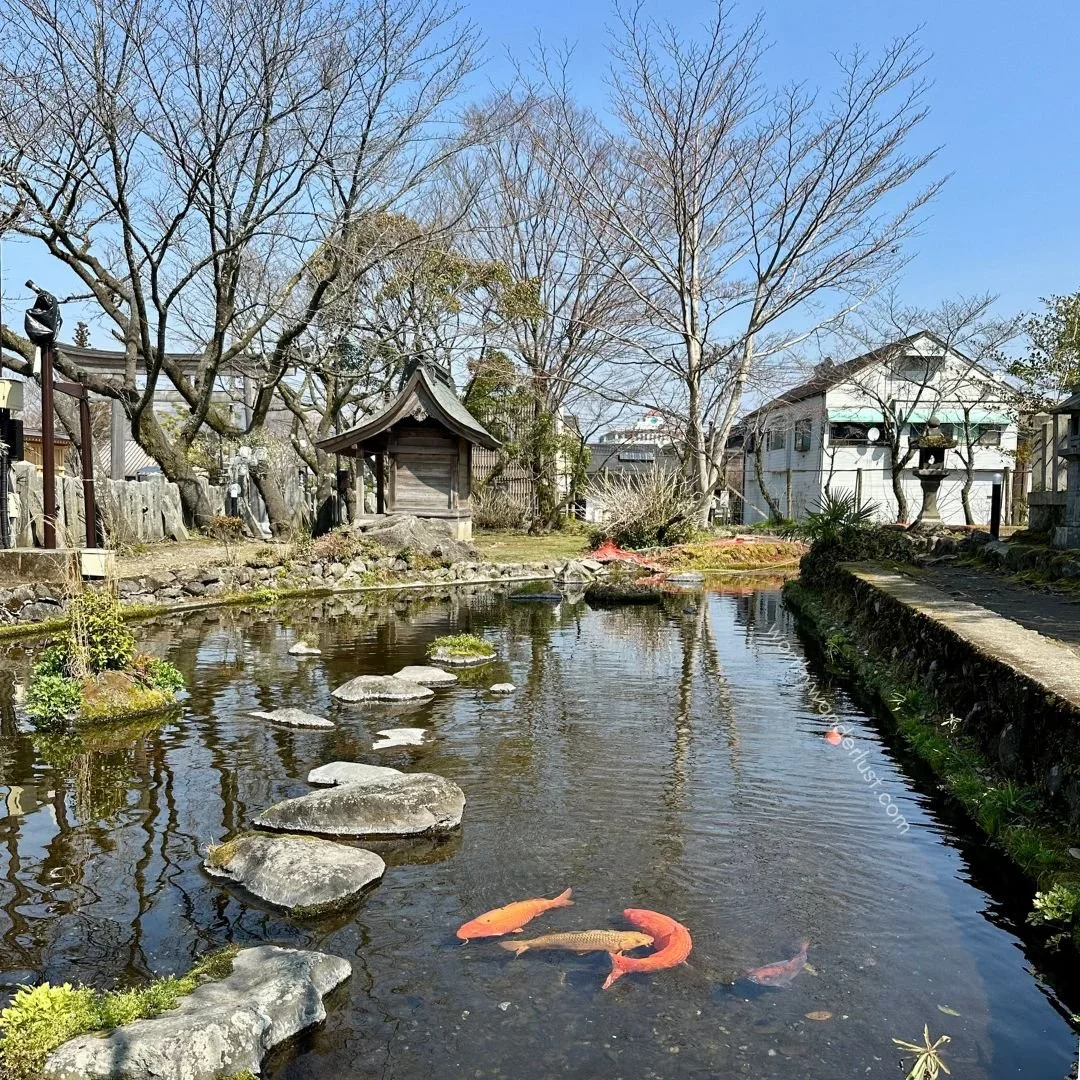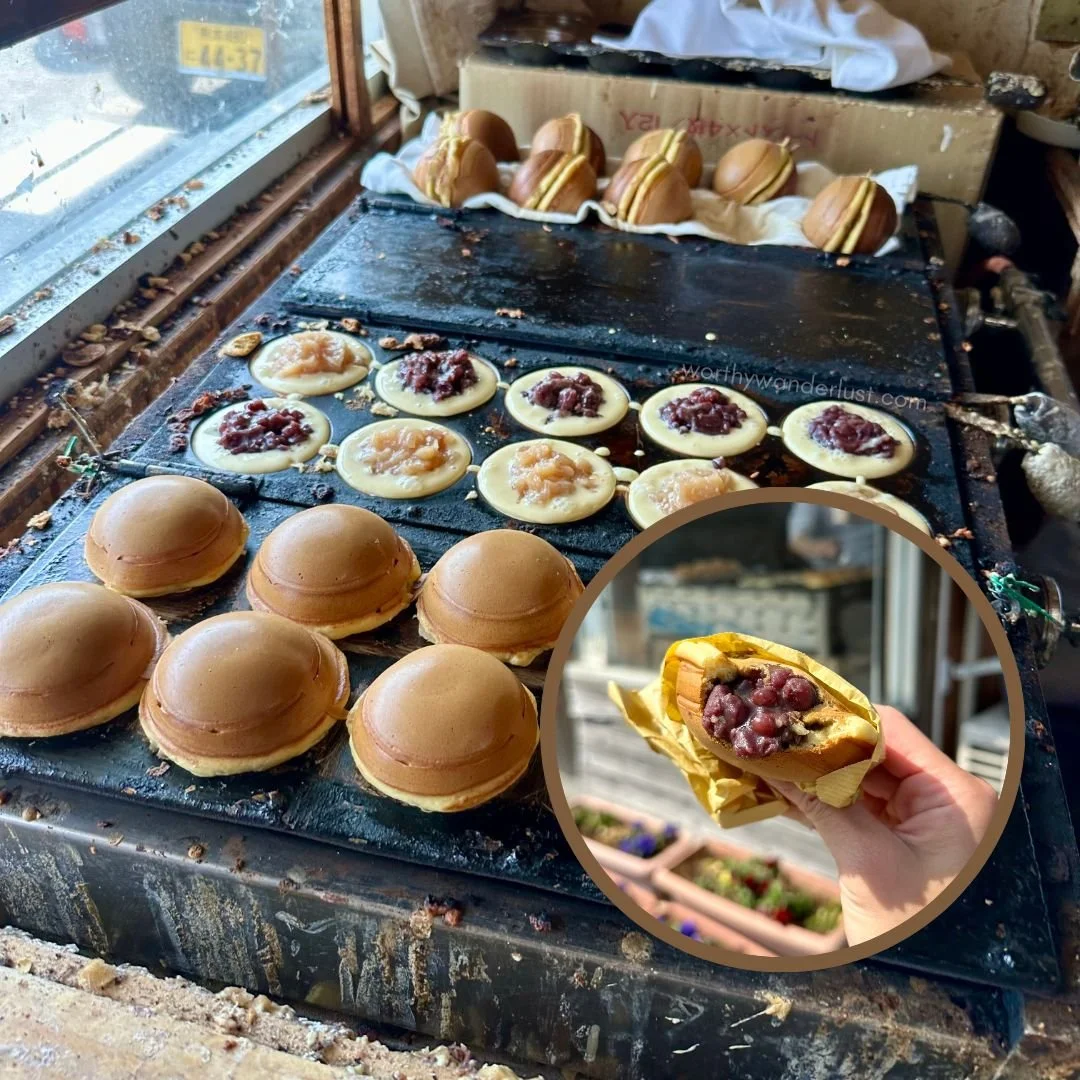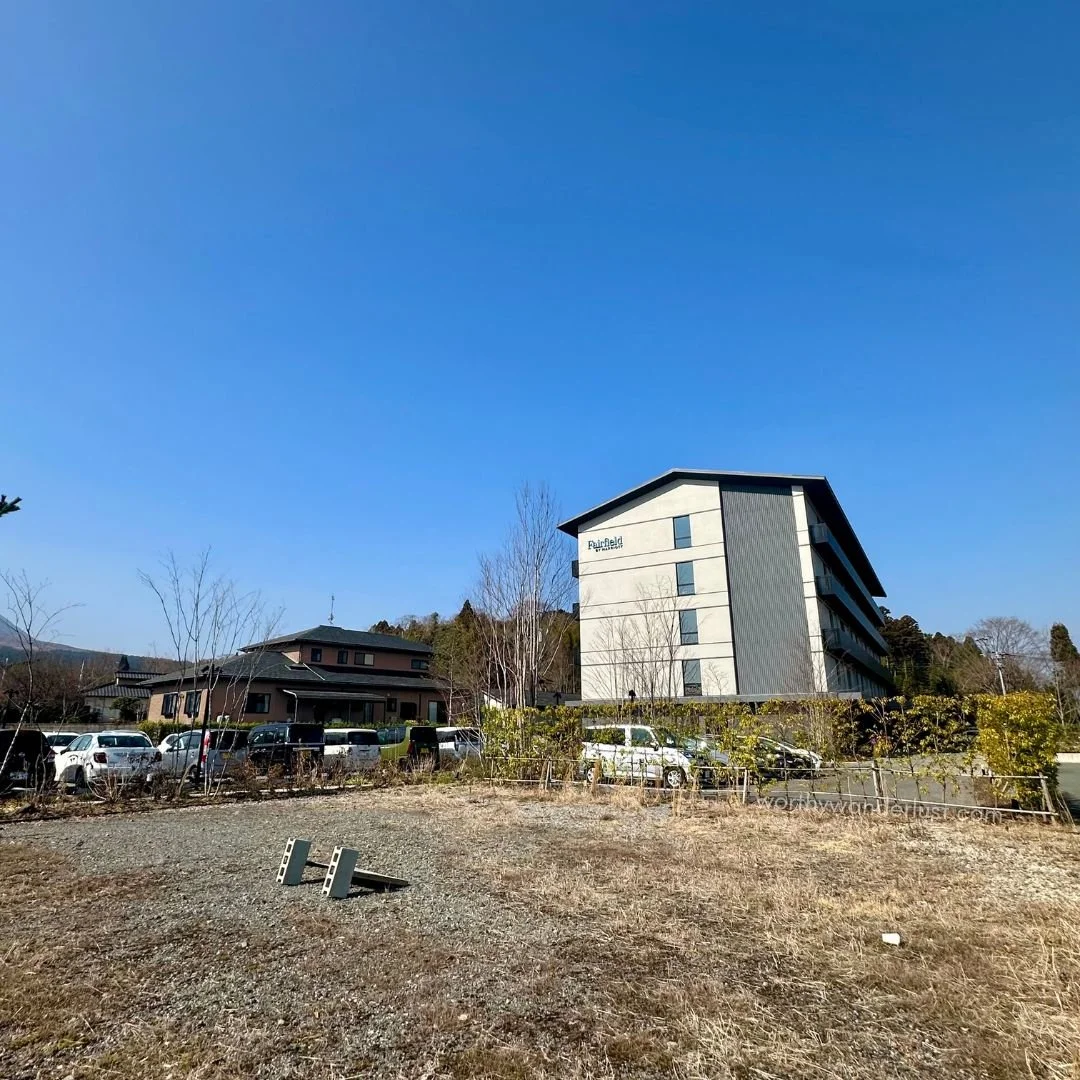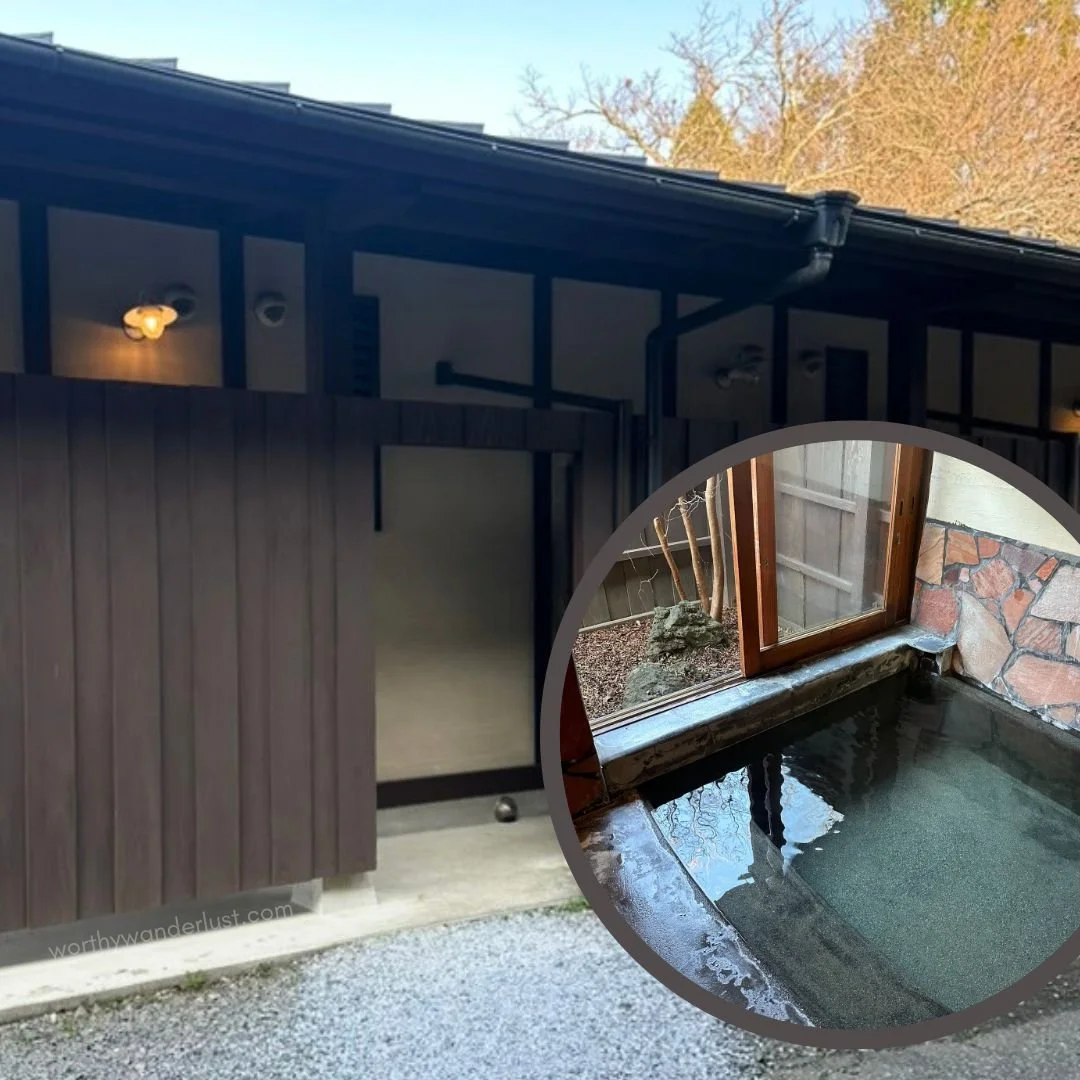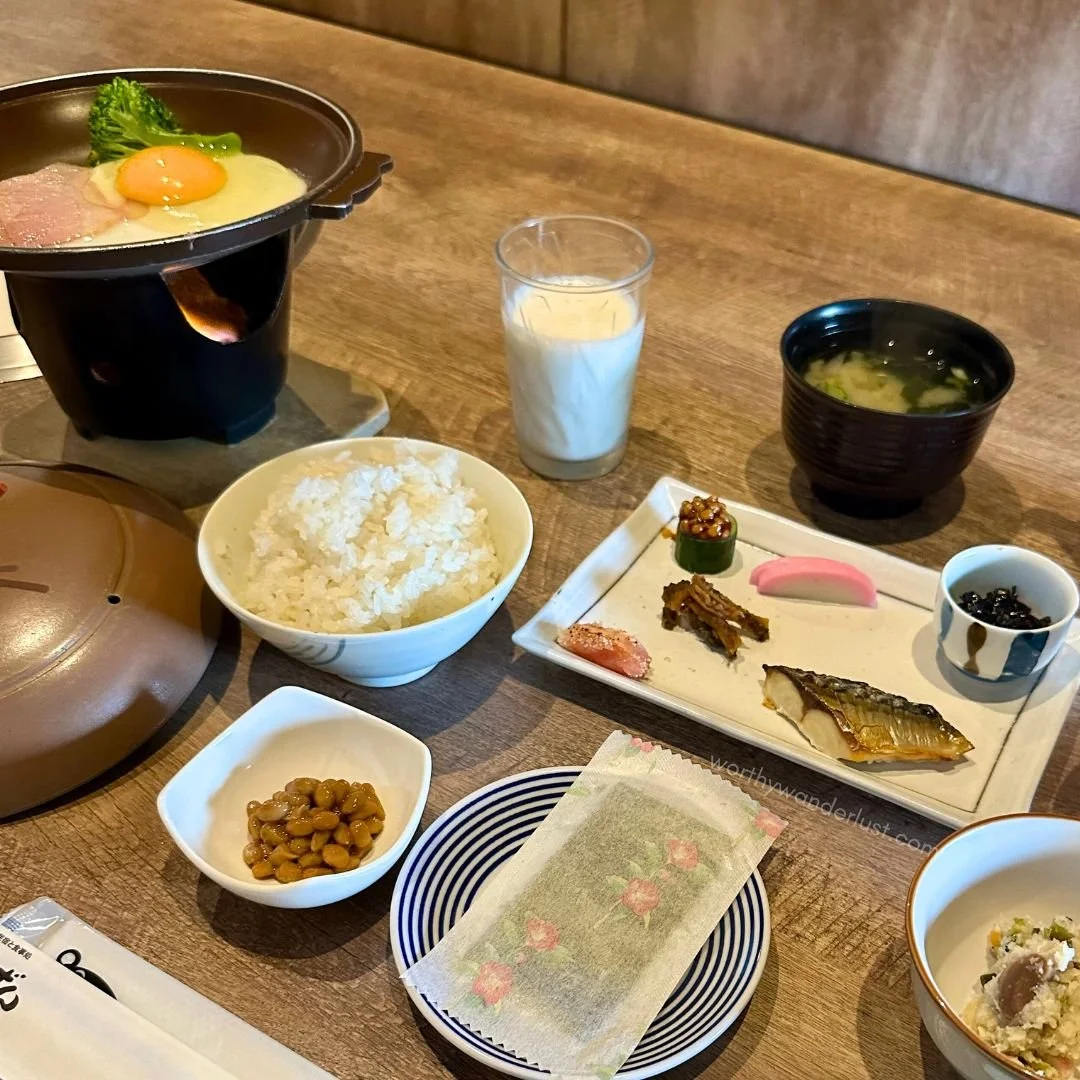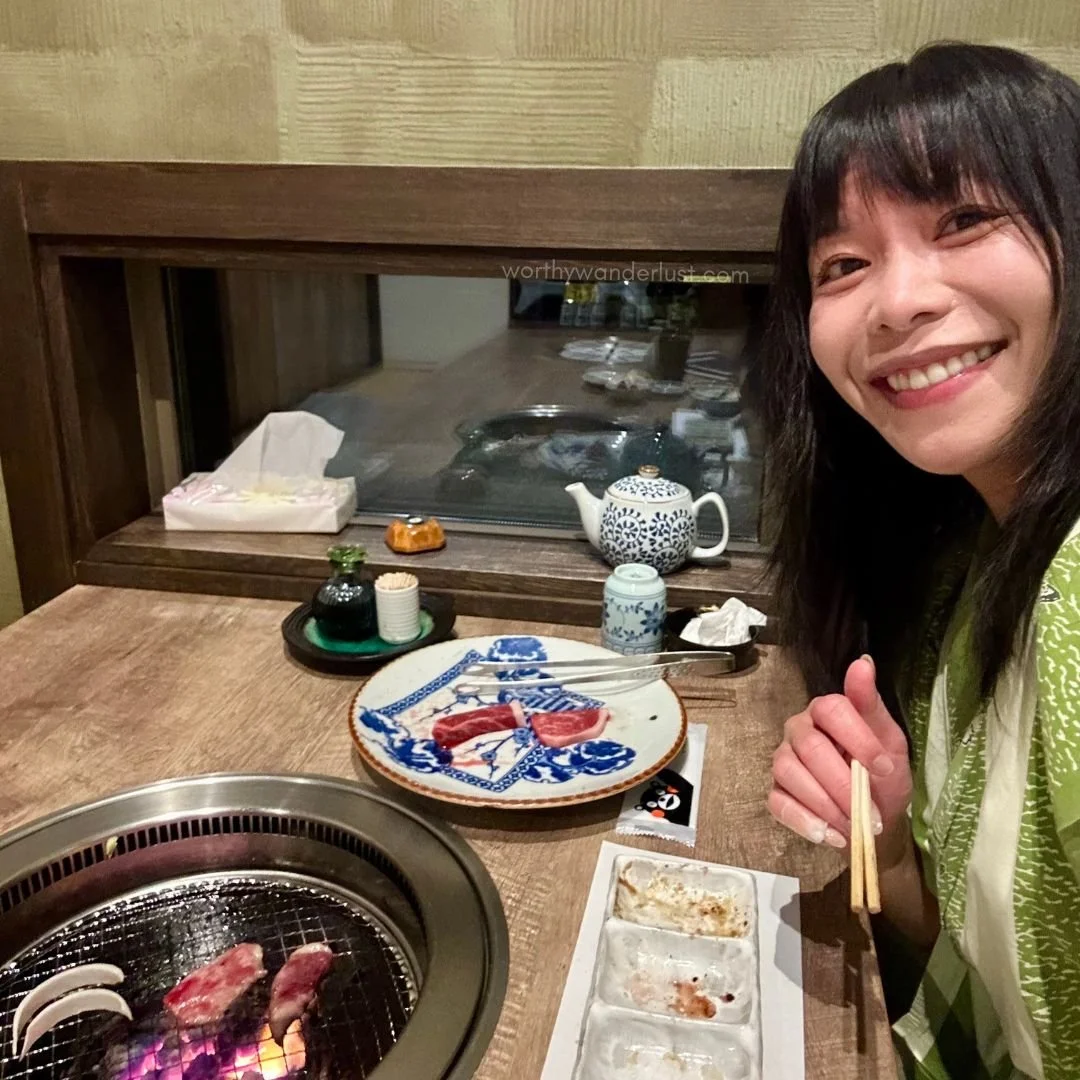Mount Aso | Where to Hike, Explore and Stay in Japan’s Volcanic Wonderland
Picture this: you're standing at the edge of one of the world's largest active volcanoes, watching white plumes of smoke billow from a crater that's been rumbling for thousands of years. The landscape looks otherworldly—barren volcanic rock, dramatic ridges, and if you're lucky, a stunning emerald-green crater lake.
This is Mount Aso, Kumamoto Prefecture’s volcanic heart and a worthy stop on any Kyushu itinerary.
Keen to visit and unsure where to start with planning your Aso adventure? Not to worry, I’ve done the legwork for you.
In this guide, I share essential public transport resources, my hiking experiences with practical tips, personal recommendations on where to stay, and more (like why Aso’s milk soft serve and akaushi wagyu are absolutely unmissable!). Let's dive in!
This post is not sponsored & reflects my personal opinions.
One. Getting to and around Aso by public transport
Driving is undoubtedly the ideal means to explore Kyushu due to limited public transport options and the language barrier.
That said, if you can’t or prefer not to drive (same here, my fellow public transport warriors!), getting to and around Aso by public transport is certainly doable.
I’ve gathered the most useful and current information (as of October 2025) here to make your journey smoother.
WoWa Tips
For the most reliable and updated info: Use your browser’s translation feature on official Japanese websites, rather than relying on their English pages.
For PDF docs: simply screenshot and use the Google Translate app.
Note: Some of the links in this guide will be to Japanese websites/PDF docs.
Getting to Aso
By Train
Aso is accessible by train from popular Northern Kyushu cities like Kumamoto, Yufuin and Beppu (the latter two require a change of train at Oita).
Here’s the JR Kyushu Route Map and the current timetable of the Kyushu Odan Tokkyu. The train runs three times daily each direction and has both reserved and non-reserved sections (JR Kyushu’s FAQs explains the difference). You can make a reservation via the JR Kyushu Train Reservation page.
For those travelling with kids, the special Aso Boy train (reserved seating only) elevates the commute into a unique train experience, complete with adorable themed carriages.
By Bus
Direct buses to Aso run from Kumamoto, Aso Kumamoto Airport, Kurokawa Onsen, Yufuin, and Beppu.
Check out the bus routes and timetables for the Kyushu Odan Bus (English) and Yamibiko Limited Express (English). Each runs a few times daily in each direction and reservations are required.
I’ve only booked through the official Japanese pages for the Kyushu Odan Bus (Japanese) and Yamibiko Limited Express (Japanese), but there are also English booking websites like Japan Bus Online and Willer Travel.
WoWa Tips
Paying on board after reserving online? I suggest bringing the exact fare in cash. I encountered a ‘cash only’ situation even though payment via credit card seems to be available now (thankfully the driver had spare change!).
Traveling often by train or bus? Consider passes like the JR Kyushu train pass or the SunQ pass.
Visiting both Takachiho and Aso? Public transport between them is infrequent and indirect (~1 hr by bus from Takachiho to Takamori, ~30 mins by train from Takamori to Tateno, and ~30 mins by train from Tateno to Aso). It’s quite the journey but I preferred that to backtracking to Kumamoto.
Plus, waiting at Takamori station was surprisingly pleasant. Modern and well-equipped, it even got an honourable mention at the International Architectural Awards 2025.
The impressive Takamori station was reopened in 2024 after the 2016 Kumamoto Earthquake.
A peaceful wait and sunset vibes at Takamori train station.
Getting around Aso
Aso Crater Line
The Aso Crater Line bus runs from Aso Station to main tourist locations like Kusasenri grassland (“草千里...”) and the Aso Sanjo Terminal (“阿蘇山上...“).
Keep the current timetable for the Aso Crater Line handy. No reservation needed; simply purchase a ticket at the train station before boarding.
While the bus runs often, I suggest arriving early with time to spare. Even in the shoulder season, I encountered long queues and completely full buses.
Aso Crater Shuttle
From Aso Sanjo terminal, you can take a 5-min shuttle bus ride to the crater viewing area or walk alongside Asosan Koen Toll Road (flat and well-paved, the path also leads to Furubochu Trailhead for hiking up Mt Nakadake/Takadake) in about 30-45 mins one way.
See the current timetable, fares, and payment options for the Aso Crater shuttle bus (no reservation needed for most times), as well as this helpful overview of the different crater viewing zones.
WoWa Tips
Keen to hike? Consider staying at least two nights. Having 2 full days worked well for me: Day 1 for a long hike, and Day 2 for exploring Aso Shrine and Kusasenri (plus a cheeky short hike).
The perfect post-Aso destination? Just over an hour’s bus ride away, Kurokawa Onsen is an atmospheric onsen town dripping with old-world charm. It was a dreamy place to relax and soak away my post-hike aches!
Lucky me to get a send-off by Kumamon, the adorable mascot that’s everywhere in Kumamoto.
The Aso Crater line bus was so packed that even the retractable seats along the aisle were all filled. What a view though!
Two. Hiking at Mount Aso
Mount Aso, one of the world’s largest active volcanoes, is the star attraction of Aso-Kuju National Park. With a massive caldera (a volcanic crater formed after ancient eruptions), it has five peaks open to hikers:
Mt Takadake, which as its name (literally ‘high peak’) suggests, is the tallest of the five.
Mt Nakadake, home to Japan’s most active crater with billowing volcanic smoke and an elusive emerald-green lake.
Mt Nekodake, blessed with rugged ridges, is unfortunately the only peak not accessible by public transport.
Mt Eboshidake, which offers a short and sharp ascent overlooking Kusasenri.
Mt Kishimadake, the shortest and most family friendly, making it a good option for a gentle hike.
My picks? The two tallest peaks, naturally. Both Takadake and Nakadake can be climbed in one satisfying day hike (efficiency, baby!).
I also squeezed in the shorter climb up Eboshidake for a bird’s eye view of Kusasenri.
WoWa Tips
Access limits: As Mount Aso is an active volcano, it is important to check Aso Volcano Disaster Prevention Council’s website for any access limits due to weather, gas emissions or—gulp—eruption alerts.
Official hiking information: The Aso visitor centre has comprehensive information on all available routes, so you can choose your battle.
Hiking up Mt Nakadake and Mt Takadake
With fresh enthusiasm (and some trepidation about climbing an active volcano!), I caught the first bus of the day to Aso Sanjo Terminal and made my way on foot to Furobuchu Trailhead for the Sunasenri Trail.
PSA: Use the clean and modern restrooms at the Aso Sanjo Terminal before heading off for your hike.
This well-paved path made it easy to go on foot from Aso Sanjo Terminal to Furobuchu Trailhead.
The Sunasenri Trail starts with a stretch of boardwalk crossing a volcanic desert before leading hikers up rocky inclines and along dramatic ridges.
The terrain was unlike anything I'd seen before—barren, otherworldly, and slightly intimidating with signs warning there may be toxic(!) volcanic gases.
Gazing back at the boardwalk crossing the volcanic desert, I was in awe.
Don’t worry about getting lost as you scramble up rocks; yellow arrows (not pictured) have been drawn on some of them to help guide the way.
Upon reaching Mt Nakadake’s summit, I was rewarded with an awe-inspiring view of the hike’s pièce de résistance. I watched plumes of white smoke billow from the massive crater, which was framed by rugged peaks with lingering patches of snow—spectacular!
On clear days with low gas levels, you might spot the emerald-green crater lake (a surreal sight created by dissolved sulfur and iron). It eluded me this time, giving me a good excuse to return someday.
From Mt Nakadake, it’s less than 30 mins to Mt Takadake. The view from Nakadake is the real showstopper as it sits closer to the crater but hey, for bragging rights and the pure joy of summiting the highest peak, why not go a little further!
Standing atop Mt Nakadake, watching smoke billow skyward.
By 3.45 pm, I’d collapsed into a seat at Coffee Plaza East, utterly spent and ravenous. Most restaurants near Aso Station only open during usual meal hours, so I was thankful to find an exception.
I ordered sake (questionable post-workout drink, I know) and the heartiest set meal on the menu—sautéed chicken with a local speciality, piping hot Takana rice. It was served sizzling in a stone bowl, topped with pickled greens and a pat of melting butter.
A cold takeaway bento just wasn’t going to cut it after hours battling the elements!
Snapshot
Length: ~4 hrs 25 mins return (Aso Visitor Centre’s estimate). This was spot on; it took me around that time from Aso Sanjo terminal (9.40am bus from Aso Station and the 2.55 pm bus back).
Difficulty: Moderate to Challenging—frequent rocky climbs, with some punishing inclines.
Terrain: Paved path → boardwalk → volcanic ash paths → rocky inclines/declines.
Getting there: Sunasenri Trail is the only public transport-accessible route up the two peaks. Take the Aso Crater Line bus from Aso Station to Aso Sanjo Terminal, then walk ~15-20 mins to Furobuchu Trailhead (near Sunasenri-ga-hama Parking Lot)
My personal must-haves in Spring: Hiking poles (darn my weak knees), gloves for rocky sections, bucket hat for sun protection, and standard hiking attire.
Hiking Mt Eboshidake
Truth be told, I came to Kusasenri expecting those picture-perfect lush green fields plastered across travel websites.
Reality check: in early spring, the fields are yellowish-brown and considerably less Insta-worthy. Nevertheless, even during the off-season, it was a popular spot buzzing with horse riders, wanderers and families having a swell time.
Kusasenri in early spring. I’d like to return when the grassland is a vibrant green!
After incorrectly following the crowds (who, in hindsight, clearly weren’t dressed for a proper hike…whoops), I used Aso Visitor Centre’s handy trail map to locate the westbound route just past a lake. Finding reassuring trail signage was such a relief, as I was the only soul on a horse poop-laden trail!
Hmm where was everyone? Thank goodness for trail signage!
Stairs for days—no pain, no gain!
Past the poop and after finally encountering one or two fellow humans (phew!), the real climbing started. It was a challenging stairmaster grind up to Mt Eboshidake’s summit, with ominous signs of falling risks keeping hikers on their toes.
Reaching the peak after that lung-busting climb felt especially sweet!
Hello Kusasenri from atop Mt Eboshidake.
Snapshot
Length: ~2 hrs return (Aso Visitor Centre’s estimate), depending on the route you take. I took about 1 hr 20 mins return from Kusasenri’s bus stop (westbound route up, eastbound route down), as I jogged partway up.
East or West: The eastbound route, with its slightly gentler ascent, seems more popular (instead of a loop, you can take this route up and down). I preferred it over the westbound route, part of which seems to be shared with horses and honestly wasn’t the most fragrant.
Difficulty: Easy to moderate—shorter than the Mt Nakadake/Takadake trek with less wild terrain, but be prepared for steep stairs.
Terrain: Grassland → dirt path → stairs
Getting there: Take the Aso Crater Line bus from Aso Station to Kusansenri. Trailhead signage isn’t obvious, so I recommend asking directions at the Kusansenri visitor centre beforehand.
My personal must-haves in Spring: Bucket hat for sun protection, and standard hiking attire. While I brought hiking poles, I didn’t use them.
Three. Things to do in Aso beyond hiking
Shop at Eki no Michi
Love konbini? Wait till you discover Japan’s michi-no-eki!
Michi-no-eki ('roadside stations') are rest stops across Japan that showcase local food, drinks, and regional specialties you can hardly find elsewhere. Think farmers market meets konbini.
Aso’s michi-no-eki is a shopping paradise!
The moment I stepped inside Aso’s michi-no-eki, I was like a kid in a candy store. Beautifully constructed bentos, fluffy chiffon cakes, and Aso's signature coffee and milk puddings were all competing for my attention (and yen!).
Fancy trying some rice balls with horse meat (commonly eaten in Aso)?
Fresh local strawberries for my fruit intake.
The michi-no-eki became my oasis. I stopped by for breakfast, hiking snacks, drinks, souvenirs, and more—all from the Aso/Kumamoto region.
Seriously though, the booth outside selling insanely milky soft serve (sourced from local farms) was reason enough to visit!
Possibly the best soft serve I’ve ever had (not exaggerating!).
Stroll around the shrine area
A short bus ride away from Aso Station, Aso Jinja is the spiritual heart of the town and, with a history spanning over 2,000 years, is one of Japan’s oldest shrines. It was a lovely area to have a peaceful stroll, taking in the striking shrine gate and calming koi pond.
Stop for a while to admire the striking gate to Aso’s ancient Shinto shrine.
Also, say hi to the fishies at the tranquil pond near the shrine entrance.
Feeling peckish? Pop into Tashiroya, a local confectionery shop offering UFO-shaped manju stuffed with sweet red or white bean paste. Heads up: the service wasn’t the friendliest (something Google reviews mention too).
Perhaps also drop by the nearby Monzenmachi Shopping Street. Its unique feature is a collection of 36 locally designed natural spring drinking fountains called ‘mizuki’ scattered throughout.
I have a soft spot for freshly made, generously stuffed manju!
Savour local akaushi wagyu
If you’ve never heard of ‘akaushi wagyu’ or ‘akagyu’, you’re not alone; I hadn’t either until I visited Aso.
Akaushi is a special breed of wagyu raised in the Aso region. Unlike the heavily marbled wagyu you might be familiar with, it is known for its lean red meat with moderate marbling and rich, robust flavor.
Akaushi wagyu (L: Sirloin. R: Ichibo/rump cap)! Sorry that this may be a little graphic…
Despite my plan to dine out, I ended up opting for yakiniku at my accommodation (bus timings just didn’t align). It turned out to be an excellent decision, as the akaushi wagyu—sirloin and ichibo (rump cap)—was phenomenal.
Tender without being too fatty, with an intense, meaty depth to its taste, it was every bit as bliss-inducing as more famous wagyu varieties.
No doubt, my most memorable meal in Aso (I’m salivating as I type this!). Keep reading for where to savour this deliciousness.
WoWa Tips
Heading out for dinner? Not many restaurants open in the evening, so do book ahead.
Looking for more inspo? Have a peek at Aso City's Sightseeing Guidebook—it's chock-full of ideas on what to do and eat.
Four. Where to stay in Aso: modern comfort vs traditional charm
For modern comfort: Fairfield by Marriott
Knowing I'd arrive by train after a long commute and that buses are scarce in the evening, I treated myself to a room at Fairfield by Marriott Kumamoto Aso.
Being mere steps away from Aso Station, its location was unbeatable.
The Marriott, located right next to Aso Station. Talk about convenience!
As I wheeled my luggage into the room, I breathed a sigh of relief. Never mind the uninspiring view of the car park, it had all the modern comforts my travel-weary body could ask for.
This room was exactly what I needed to recharge.
There isn't an in-house restaurant, but guests can heat up bentos in the lounge and kitchenette area and help themselves to complimentary miso soup, coffee, or tea.
The Marriott’s gorgeous lounge is a cozy space to relax and have a cuppa.
Snapshot
Great for: Easy public transport access, and comfy, modern rooms.
Keep in mind: Higher rates, no on-site restaurants, and no Japanese-style hot baths/onsen.
Cost: I paid ~¥18,700 (A$176) a night for a standard double room in March 2025 (originally A$226; I used a voucher when booking via Qantas Hotels).
For traditional charm: Asogen
Minshuku Asogen couldn’t be more different from the Marriott. With Japanese-style tatami rooms, homey wooden decor, and kind hospitality, it exuded traditional charm.
Living my best traditional Japanese life!
While my room only has a toilet and sink, there are four private hot baths shared among guests on a first-come, first-served basis (nope, I never had to wait).
After a day of hiking and sightseeing, I’d slip on the provided yukata and decompress at one of the steaming baths (housed in a separate building opposite the main guesthouse). With cool air drifting through the window as I gazed out at a serene zen garden, it was pure, restorative bliss.
Soaking in a private hot bath with garden views is my ideal post-hike recovery!
What really made my stay was the food. Asogen’s in-house restaurant serves carefully crafted set meals celebrating local ingredients, and each group even gets their own private booth.
My yakiniku set dinner starred akaushi wagyu that was achingly tender and flavoursome, accompanied by sides like light, crispy tempura and housemade pickles.
My gloriously delicious set dinner. I also couldn’t resist ordering their house-made plum wine.
Breakfast similarly delivered. I started the day with a well-balanced, nourishing spread that included rich, creamy Aso milk (totally lived up to the hype) and natto that was unexpectedly mild (no funky smell!).
A nourishing breakfast spread that made lunch optional.
Exceptional regional food, private hot baths with zen gardens, and a room oozing with Japanese culture? Pretty much what I came to Japan for, and all at affordable guesthouse prices!
Snapshot
Great for: Traditional Japanese experience, exceptional meals, private hot baths, and affordable pricing.
Keep in mind: Located a few bus stops from Aso Station with infrequent bus services, more rustic with thinner walls, and futon bedding.
Getting there: Asogen is located a short walk (<5mins) away from the Otohime Pension Mura Iriguchi bus stop, serviced by the Kyushu Odan Bus and Yamabiko Limited Express. No reservations required; pay by cash on board.
Cost: I paid ¥12,850 (~A$121) a night for a standard room in March 2025 (booked via booking.com).
Meals: Reservations required. Regular meal prices per person in March 2025: dinner (¥6,800), breakfast (¥2,200), both (¥8,250).
Thank you for dropping by!
Thanks for dropping by my website! Your support means a lot and encourages me to keep creating and sharing helpful content. Discover more value-packed Japan adventures on my blog or @worthy.wanderlust.






